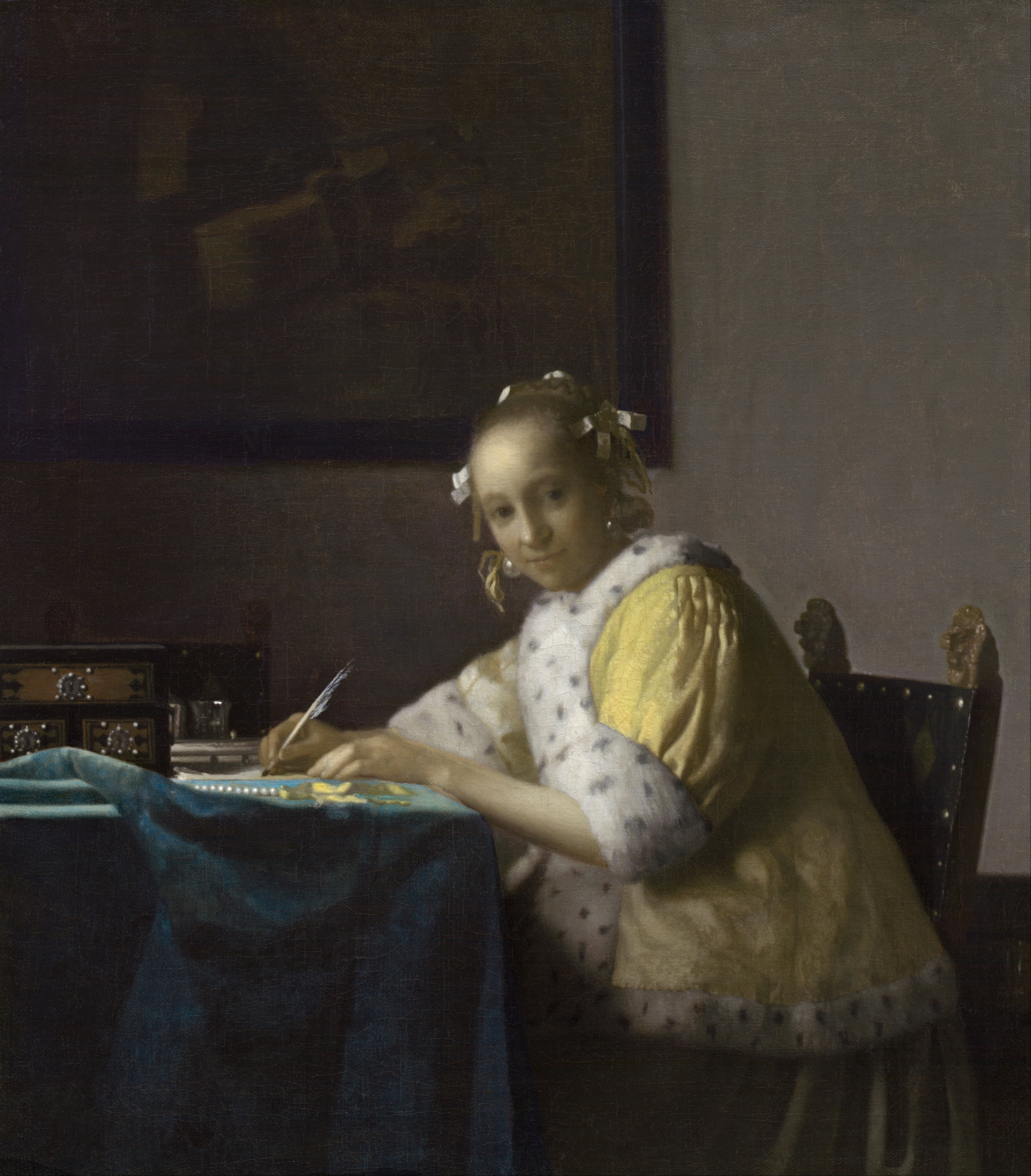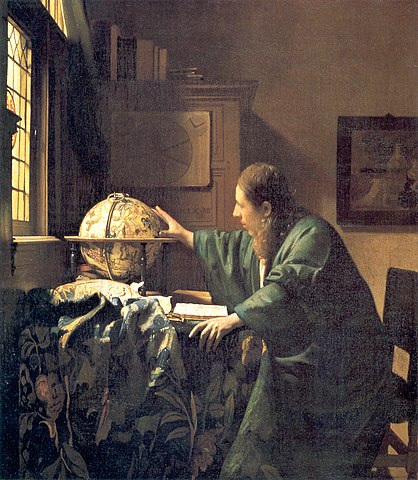Class Distinctions: Is the Sitter's Dress Made of Silk or Coarse Wool? Dutch Painting in the Age of Rembrandt and Vermeer

Johannes Vermeer, A Lady Writing (c. 1665); oil on canvas. Gift of Harry Waldron Havemeyer and Horace Havemeyer, Jr., in memory of their father, Horace Havemeyer. National Gallery of Art
The Museum of Fine Arts, Boston (MFA), will debut Class Distinctions: Dutch Painting in the Age of Rembrandt and Vermeer, the first exhibition to look at 17th-century Dutch paintings through the lens of the social classes. Including 75 paintings from collections both in the US and abroad, the exhibition on view until January 18, 2016 features major works by artists including Rembrandt and Vermeer as well as Jan Steen, Frans Hals, Pieter de Hooch, Gerard ter Borch and Gerrit Dou, among others. Loans from Amsterdam, Paris, Berlin, Munich, Budapest and London, many never before seen in the US, will complement those coming from other public and private collections in North America and Europe.
Galleries in the exhibition will be devoted to the three broad social classes, upper, middle and lower, and the last room will include paintings dedicated to where the classes met. Princes, regents and milkmaids figure in the thematic groupings within the classes, reflecting the social status of people and the importance their class had in the new Dutch Republic. The fine detail in the pictures will encourage close looking, inspiring the viewer to differentiate between a mistress and a maid or to distinguish a noble from a social-climbing merchant. The exhibition offers the rare opportunity to see works by Vermeer in Boston, in addition to featuring many subjects that are unusual in 17th-century Dutch painted depictions.
"These carefully selected paintings allow us to glimpse the ways rank and status are expressed pictorially. For example, is the sitter's dress made of silk or coarse wool? Is the subject serving or being served? Does the figure stand upright or is he stooped? Even the person's behavior, snoring in a pub or riding a horse, indicates his social class. Details like these encourage us to form a sharper and more nuanced picture of 17th-century Dutch life and society," said Baer.
In the 17th century, the Princes of Orange were the 'Stadholders', the de facto rulers of the Netherlands. They were responsible for selecting municipal officials and commanding the army and navy of the Dutch Republic. Paintings of successive stadholders on view will include Michiel van Mierevelt’s Maurits, Prince of Orange (1607, Museum Het Prinsenhof, Delft); Anthony van Dyck’s portrait of Maurits’ half-brother Frederik Hendrik, Prince of Orange (about 1631–32, The Baltimore Museum of Art); and a small history painting of Frederik Hendrik’s grandson, The Arrival of King-Stadholder William III in the Oranjepolder on 31 January 1691 (1692, Mauritshuis, The Hague) by Ludolf Bakhuizen. This section of the exhibition will also feature an album of 102 watercolors by Adriaen van de Venne, open to a page featuring a miniature of The Winter King and Queen (1625-26, The British Museum, London) on horseback, preceding a mounted Frederik Hendrik and his wife, Amalia van Solms. The album describes the political and personal ties of Bohemia's Winter King (who lived in exile in The Hague) to his uncle, Frederik Hendrik.
"Nobles and Aspiring Nobles" explores images of the landed nobility as well as families who aspired to the noble lifestyle. Many nobles in the Dutch Republic who enjoyed privileges that distinguished them from other classes lived on income from land, tithes, rents and other inherited rights. Often they commissioned portraits merely to document their lineage, marking their family genealogy rather than asserting their taste and social standing. One exception is Jan Steen’s Portrait of Jacoba Maria van Wassenaer, known as "The Poultry Yard" (1660, Mauritshuis, The Hague), which imaginatively depicts the young noble, Jacoba Maria van Wassenaer, in front of Lokhorst Castle. The property and coat of arms in the painting signal her kinship in the lineage that defined the noble’s place in the social hierarchy. The newly wealthy without a noble heritage could buy estates and titles. Their aspirations were expressed in paintings whose forms were typically reserved for royalty and high nobility, such as equestrian and hunting portraits.
Paintings of "Regents and Wealthy Merchants" represent the country’s urban elite, who benefited from the economic growth and prosperity that emerged as Holland became a global power in the 17th century. Regents drawn from the Republic's prosperous merchants were men who held civic administrative or political appointments. Rembrandt's portrait of Andries de Graeff (1639, Gemäldegalerie Alte Meister, Kassel,) depicts a confident member of the Amsterdam ruling class who amassed one of the largest fortunes in the city. Frans Hals' Regents of the St. Elisabeth Hospital in Haarlem (1641, Frans Hals Museum, Haarlem) reflects the social prestige attained by wealthy administrators of charitable organizations.
Vermeer's A Lady Writing (about 1665, National Gallery of Art, Washington) portrays a privileged woman engaged in the art of letter writing associated in 17th-century Holland with a certain degree of education and wealth. The painting offers a look at the luxurious, protected life of the women of the Dutch urban elite. Belonging to the same world, Vermeer's The Astronomer (1668, Musée du Louvre, Paris) represents a wealthy "gentleman amateur," engaged in scientific inquiry that had relevance to the maritime navigation crucial to the mercantile interests of the young country.
The astronomer, Johannes Vermeer, 1668. Louvre Museum, Paris
More Articles
- Monetary Policy Report Prepared at the Federal Reserve Bank of Richmond, Expectations for Future Growth Were Mostly Unchanged
- Julia Sneden Wrote: Love Your Library
- Rebecca Louise Law: Awakening on View at Honolulu Museum of Art
- Jo Freeman's Review of Yippie Girl: Exploits in Protest and Defeating the FBI
- Annandale-on-Hudson, New York ... With Pleasure: Pattern and Decoration in American Art 1972 - 1985
- Lynn Hershman Leeson: Who Has Celebrated Her 80th Birthday and a New Exhibition, TWISTED, at The New Museum in New York City
- Upcoming Exhibitions at the Fashion Institute of Technology (FIT): Head to Toe and Ravishing: The Rose in Fashion
- Explore the Royal Collection and an Exhibition, Masterpieces From Buckingham Palace
- Where We Stand: Partial Draft of Democratic Party Platform Already Voted Upon By Delegates; Covid-19 Pandemic Is a Prime Focus
- The Autobiography of a Garden at The Huntington, a Joy for Viewers and Gardeners






